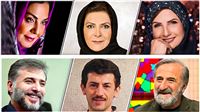Iranians celebrate National Cinema Day on September 12th, which corresponds to the 21st of Shahrivar on the Persian calendar.
The designation of Shahrivar 21 as National Cinema Day dates back to the year 2000, during the 4th Iran Cinema Celebration. This significant day coincides with the commemoration of 100 years of Iranian cinema.
Since the 1979 Islamic Revolution, Iranian cinema has made remarkable progress.
Over the years, Iranian films have explored new themes, including ethical and religious values, gaining international recognition and participating in various global film festivals.
On this special day, iFilm English website aims to provide an overview of the history of cinema in Iran:

 The first cinematograph machine in Iran was introduced by Mozaffar al-Din Shah in 1900. This marked the inception of Iranian cinema. The first Persian sound film, 'Dokhtar Lor' (The Lor Girl), was produced in 1933 by Ardeshir Irani.
The first cinematograph machine in Iran was introduced by Mozaffar al-Din Shah in 1900. This marked the inception of Iranian cinema. The first Persian sound film, 'Dokhtar Lor' (The Lor Girl), was produced in 1933 by Ardeshir Irani.
The first Iranian cinema hall, named 'Cinema Soli’, was established in 1900 by Catholics in Tabriz, Iran. However, due to limited access to new films, it closed its doors in 1916.
 Until 1930, no Iranian films were produced, and the few existing cinemas primarily screened Western films with Persian subtitles. The first feature-length Iranian film, 'Abi and Rabi', was created in 1931 by Ovanes Ohanian.
Until 1930, no Iranian films were produced, and the few existing cinemas primarily screened Western films with Persian subtitles. The first feature-length Iranian film, 'Abi and Rabi', was created in 1931 by Ovanes Ohanian.
Pioneers of Iranian Cinema:
• First Iranian cinematographer: Mirza Ibrahim Khan Akkas Bashi (1900)
• First Iranian cinema: Grand Cinema (1926)
• First Iranian silent film: 'Abi and Rabi' directed by Ovanes Ohanian (1931)
• First Iranian sound film: 'The Lor Girl' directed by Ardeshir Irani (1933)
• First Iranian dubbed film: ‘The Runaway Girl’ directed by Ismaeel Kushan (1946)
• First Iranian female director: Shahla Riahi for the film 'Marjan' (1956)
• First Iranian cinema magazine: Iranian Film Magazine (1982), still in publication today
The First Sound Film in Iranian Cinema:
In 1933, Iranian cinema experienced a significant milestone with the production of the first Iranian sound film, 'The Lor Girl' by Ardeshir Irani in Mumbai. This film received a warm reception and set the stage for the creation of numerous other Iranian films. However, a series of political changes in Iran from 1936 to 1948, along with the impacts of World War II, resulted in a downturn for the budding Iranian cinema.
It is important to note that during this era, cinema in Iran had not yet become a widely accessible medium. It was primarily enjoyed by the elite and select segments of society due to the limited number of theaters available in Tehran and major cities.
 Additionally, there was no distinct artistic movement among film producers during this period, with the exception of Abdulhossein Sepanta, whose works stood out for their incorporation of ancient Iranian literary elements. In most cases, Iranian films were adaptations or imitations of foreign cinema.
Additionally, there was no distinct artistic movement among film producers during this period, with the exception of Abdulhossein Sepanta, whose works stood out for their incorporation of ancient Iranian literary elements. In most cases, Iranian films were adaptations or imitations of foreign cinema.
The Emergence of Cinema:
Iran's first public cinema came into being in 1904. It was established by Mirza Ibrahim Khan Akkas Bashi. Subsequently, the inaugural official cinema venue in Iran, named ‘Cinema Iran’, was opened in Tehran in 1926.
The 1940s and 1950s:
In the years following 1943, the landscape of filmmaking in Iran underwent significant growth and transformation. This expansion was attributed to the establishment of numerous film companies by various investors and the rising popularity of cinema among the general public. Regrettably, this period saw a shift towards prioritizing financial returns and profits in the production of populist and light-hearted films, becoming a prevalent trend in the filmmaking industry.
Notable figures in Iranian cinema during this era included Ismaeel Kushan, Houshang Kavousi, and Farrokh Ghaffari. Among them, Ismaeel Kushan played a pivotal role in shaping mainstream Iranian cinema, often referred to as Farsi films.
The 1960s and 1970s: The New Wave of Iranian Cinema
In 1965, Iranian cinema experienced a remarkable period of growth in Farsi Film, highlighted by the release of films like 'Ganj-e Qarun'. Nonetheless, this surge in film production eventually led to a decline in overall quality.
 In 1969, a pivotal transformation occurred in Iranian cinema with the arrival of groundbreaking films such as ‘Gav’ (The Cow) and ‘Qeysar’, giving birth to a revolutionary movement recognized as the ‘New Wave of Iranian Cinema’.
In 1969, a pivotal transformation occurred in Iranian cinema with the arrival of groundbreaking films such as ‘Gav’ (The Cow) and ‘Qeysar’, giving birth to a revolutionary movement recognized as the ‘New Wave of Iranian Cinema’.
Concurrently, the establishment of the Institute for the Intellectual Development of Children and Young Adults (CIDCA) in 1969 provided a favorable environment for the advancement of cultural cinema within Iran.
The collaboration between UNESCO and CIDCA, exemplified by the appointment of Noureddin Zarrinkelk as a representative to Belgium, played a significant role in elevating the cultural standards of the institute.
A cultural renaissance began to take shape among progressive filmmakers, aided by the presence of the Institute for the Intellectual Development of Children and Young Adults. Furthermore, a decline in the public's interest in elements like violence and superficial entertainment, particularly among educated youth in Iran, collectively fostered a fresh and constructive trajectory in Iranian cinema during the years spanning from 1971 to 1978.
Sohrab Sepehri, Bahram Beyzaie, Abbas Kiarostami, Khosro Sinaee, Kamran Shirdel, Daryoush Mehrjouee, Masoud Kimiai, Ali Hatami, Amir Naderi, Fereydun Gole, Khosro Haritash, Parviz Kimiavi, and other remarkable figures were instrumental in this movement, driven by motivations beyond material gain. They laid the foundation for significant advancements in Iranian cinema in the years ahead.
Cinema in the Post-Revolution Era:
Following the revolution, from 1978 to 1983, Iranian cinema experienced a profound cultural shift due to the absence of established filmmaking regulations. New laws were devised and implemented in accordance with the principles of the Islamic Republic.
In the years post-1983, filmmaking regulations were established to align with the post-revolutionary landscape. The artistic growth of filmmakers from the 1970s, such as Abbas Kiarostami, Bahram Beyzaie, Masoud Kimiai, and Daryoush Mehrjouee, had a positive impact on the trajectory of Iranian cinema. They crafted exceptional works that garnered international recognition and critical acclaim.
 During this period, a new generation of filmmakers, including Ibrahim Hatamikia, Majid Majidi, and Abolfazl Jalili, brought their diverse interests to the world of filmmaking. Through dedication and rigorous study, they adeptly incorporated the nuances of this art into their work, playing influential roles during this transformative era.
During this period, a new generation of filmmakers, including Ibrahim Hatamikia, Majid Majidi, and Abolfazl Jalili, brought their diverse interests to the world of filmmaking. Through dedication and rigorous study, they adeptly incorporated the nuances of this art into their work, playing influential roles during this transformative era.
 Additionally, the consistent annual organization of at least one international film festival, notably the Fajr International Film Festival, held during the Persian month of Bahman in Iran, has played a pivotal role in nurturing an interest in cinema among the country's youth. This festival has also contributed significantly to the advancement of the cinematic art.
Additionally, the consistent annual organization of at least one international film festival, notably the Fajr International Film Festival, held during the Persian month of Bahman in Iran, has played a pivotal role in nurturing an interest in cinema among the country's youth. This festival has also contributed significantly to the advancement of the cinematic art.
The House of Cinema stands as the largest professional organization representing the various facets involved in the production of Iranian cinema, comprising over twenty legal guilds.

Following the Iranian Revolution, Iranian cinema made a remarkable transition from the pre-revolutionary Farsi film wave to becoming a cultural movement not only within the country but also in the broader region. Despite substantial international pressures, Iranian cinema has consistently commanded profound respect and recognition.

 Movies like ‘Mother’, ‘Sara’, ‘Where Is the Friend's Home?’, ‘Actor’, ‘Taste of Cherry’, ‘A Separation’, ‘Children of Heaven’, ‘Saint Mary’, 'Muhammad: The Messenger of God', ‘I Want to Stay Alive’, ‘The Kingdom of Solomon, the Prophet', ‘Shokaran’, ‘The Bride’, ‘Tenants’, ‘The Red Ribbon’, The Twenty-Ninth Night’, ‘The Color of Paradise’, ‘The Glass Agency’, ‘The Cow’, ‘Mom's Guests’, ‘So Close, So Far Away’, ‘Once Upon a Time, Cinema’, ‘A Piece of Bread’, ‘Track 143’, ‘Chamran’, ‘Captain Khorshid’ and ‘The City of Mice’ represent just a fraction of the diverse and high-quality productions of Iranian cinema since the Islamic Revolution.
Movies like ‘Mother’, ‘Sara’, ‘Where Is the Friend's Home?’, ‘Actor’, ‘Taste of Cherry’, ‘A Separation’, ‘Children of Heaven’, ‘Saint Mary’, 'Muhammad: The Messenger of God', ‘I Want to Stay Alive’, ‘The Kingdom of Solomon, the Prophet', ‘Shokaran’, ‘The Bride’, ‘Tenants’, ‘The Red Ribbon’, The Twenty-Ninth Night’, ‘The Color of Paradise’, ‘The Glass Agency’, ‘The Cow’, ‘Mom's Guests’, ‘So Close, So Far Away’, ‘Once Upon a Time, Cinema’, ‘A Piece of Bread’, ‘Track 143’, ‘Chamran’, ‘Captain Khorshid’ and ‘The City of Mice’ represent just a fraction of the diverse and high-quality productions of Iranian cinema since the Islamic Revolution.

As reported by the Iranian News Agency (Mizan), Iranian cinema, despite experiencing numerous challenges, has consistently stayed true to its core path. It has achieved numerous remarkable milestones on the global stage. Some of these accomplishments include:
- Silver Bear for Best Director at the Berlin Film Festival for ‘Still Life’ in 1974, directed by Sohrab Shahid-Saless
- Silver Bear Award at the Berlin Film Festival for ‘Stone Garden’ in 1976, directed by Parviz Kimiavi.
- Best Film Award at the Three Continents Festival in Nantes, France, for ‘The Runner’ in 1985, directed by Amir Naderi.
- ‘Children of Heaven’ being selected as one of the final 5 nominees for Best Foreign Film at the 1998 Oscars.
- Golden Palm award at the Cannes Film Festival for ‘Taste of Cherry’ in 1997, directed by Abbas Kiarostami.
- Golden Prize at the Tokyo International Film Festival for ‘Journey to the South’ in 1997, directed by Parviz Shahbazi.
- Critics' Award at the London Film Festival in 2002 for ‘I Am Taraneh, 15’, directed by Rasoul Sadrameli.
- Special Golden Globe Award in 2011 for ‘A Separation’, directed by Asghar Farhadi.
- Academy Award (Oscar) for Best Foreign Language Film in 2012 for ‘A Separation’, directed by Asghar Farhadi.
- Golden Crow Pheasant Award at the Kerala International Film Festival in India in 2013 for ‘Parviz’, directed by Majid Barzegar.
- Golden Palm Award at the Cannes Film Festival for ‘The Salesman’ in 2016, directed by Asghar Farhadi.
- Golden Palm Award for Best Actor at the Cannes Film Festival in 2016 for Shahab Hosseini’s role in ‘The Salesman’.
Mohammad-Ali Keshavarz, Ali Nasirian, Ezzatollah Entezami, Davoud Rashidi, Daryoush Arjmand, Hossein Gil, Jamshid Hashempour, Parviz Pourhosseini, Reza Zhian, Jaleh Olov, Fakhri Khorvash, Nikou Kheradmand, Hamideh Kheirabadi, Sorayya Qasemi, Jamileh Sheykhi, Parviz Parastouee, Reza Kianian, Merila Zarei, Majid Majidi, Ebrahim Hatamikia, Shahab Hosseini, Asghar Farhadi, Abbas Kiarostami, Daryoush Mehrjouee, Khosro Shakibaee, Hamid Jebeli, Alireza Khamesh, Daryoush Khondji, Abdollah Eskandari, Mahmoud Kalari, Reza Attaran, Pouran Derakhshandeh, Azita Hajiyan, Parviz Shahbazi, and Kamal Tabrizi are among the prominent figures who have left a significant mark on the rich history of Iranian cinema.
iFilm extends its congratulations to all filmmakers and those involved in the world of cinema on the occasion of National Cinema Day.
MM/FM


 The first cinematograph machine in Iran was introduced by Mozaffar al-Din Shah in 1900. This marked the inception of Iranian cinema. The first Persian sound film, 'Dokhtar Lor' (The Lor Girl), was produced in 1933 by Ardeshir Irani.
The first cinematograph machine in Iran was introduced by Mozaffar al-Din Shah in 1900. This marked the inception of Iranian cinema. The first Persian sound film, 'Dokhtar Lor' (The Lor Girl), was produced in 1933 by Ardeshir Irani. Until 1930, no Iranian films were produced, and the few existing cinemas primarily screened Western films with Persian subtitles. The first feature-length Iranian film, 'Abi and Rabi', was created in 1931 by Ovanes Ohanian.
Until 1930, no Iranian films were produced, and the few existing cinemas primarily screened Western films with Persian subtitles. The first feature-length Iranian film, 'Abi and Rabi', was created in 1931 by Ovanes Ohanian. Additionally, there was no distinct artistic movement among film producers during this period, with the exception of Abdulhossein Sepanta, whose works stood out for their incorporation of ancient Iranian literary elements. In most cases, Iranian films were adaptations or imitations of foreign cinema.
Additionally, there was no distinct artistic movement among film producers during this period, with the exception of Abdulhossein Sepanta, whose works stood out for their incorporation of ancient Iranian literary elements. In most cases, Iranian films were adaptations or imitations of foreign cinema. In 1969, a pivotal transformation occurred in Iranian cinema with the arrival of groundbreaking films such as ‘Gav’ (The Cow) and ‘Qeysar’, giving birth to a revolutionary movement recognized as the ‘New Wave of Iranian Cinema’.
In 1969, a pivotal transformation occurred in Iranian cinema with the arrival of groundbreaking films such as ‘Gav’ (The Cow) and ‘Qeysar’, giving birth to a revolutionary movement recognized as the ‘New Wave of Iranian Cinema’. During this period, a new generation of filmmakers, including Ibrahim Hatamikia, Majid Majidi, and Abolfazl Jalili, brought their diverse interests to the world of filmmaking. Through dedication and rigorous study, they adeptly incorporated the nuances of this art into their work, playing influential roles during this transformative era.
During this period, a new generation of filmmakers, including Ibrahim Hatamikia, Majid Majidi, and Abolfazl Jalili, brought their diverse interests to the world of filmmaking. Through dedication and rigorous study, they adeptly incorporated the nuances of this art into their work, playing influential roles during this transformative era. Additionally, the consistent annual organization of at least one international film festival, notably the Fajr International Film Festival, held during the Persian month of Bahman in Iran, has played a pivotal role in nurturing an interest in cinema among the country's youth. This festival has also contributed significantly to the advancement of the cinematic art.
Additionally, the consistent annual organization of at least one international film festival, notably the Fajr International Film Festival, held during the Persian month of Bahman in Iran, has played a pivotal role in nurturing an interest in cinema among the country's youth. This festival has also contributed significantly to the advancement of the cinematic art.

 Movies like ‘Mother’, ‘Sara’, ‘Where Is the Friend's Home?’, ‘Actor’, ‘Taste of Cherry’, ‘A Separation’, ‘Children of Heaven’, ‘Saint Mary’, 'Muhammad: The Messenger of God', ‘I Want to Stay Alive’, ‘The Kingdom of Solomon, the Prophet', ‘Shokaran’, ‘The Bride’, ‘Tenants’, ‘The Red Ribbon’, The Twenty-Ninth Night’, ‘The Color of Paradise’, ‘The Glass Agency’, ‘The Cow’, ‘Mom's Guests’, ‘So Close, So Far Away’, ‘Once Upon a Time, Cinema’, ‘A Piece of Bread’, ‘Track 143’, ‘Chamran’, ‘Captain Khorshid’ and ‘The City of Mice’ represent just a fraction of the diverse and high-quality productions of Iranian cinema since the Islamic Revolution.
Movies like ‘Mother’, ‘Sara’, ‘Where Is the Friend's Home?’, ‘Actor’, ‘Taste of Cherry’, ‘A Separation’, ‘Children of Heaven’, ‘Saint Mary’, 'Muhammad: The Messenger of God', ‘I Want to Stay Alive’, ‘The Kingdom of Solomon, the Prophet', ‘Shokaran’, ‘The Bride’, ‘Tenants’, ‘The Red Ribbon’, The Twenty-Ninth Night’, ‘The Color of Paradise’, ‘The Glass Agency’, ‘The Cow’, ‘Mom's Guests’, ‘So Close, So Far Away’, ‘Once Upon a Time, Cinema’, ‘A Piece of Bread’, ‘Track 143’, ‘Chamran’, ‘Captain Khorshid’ and ‘The City of Mice’ represent just a fraction of the diverse and high-quality productions of Iranian cinema since the Islamic Revolution.




